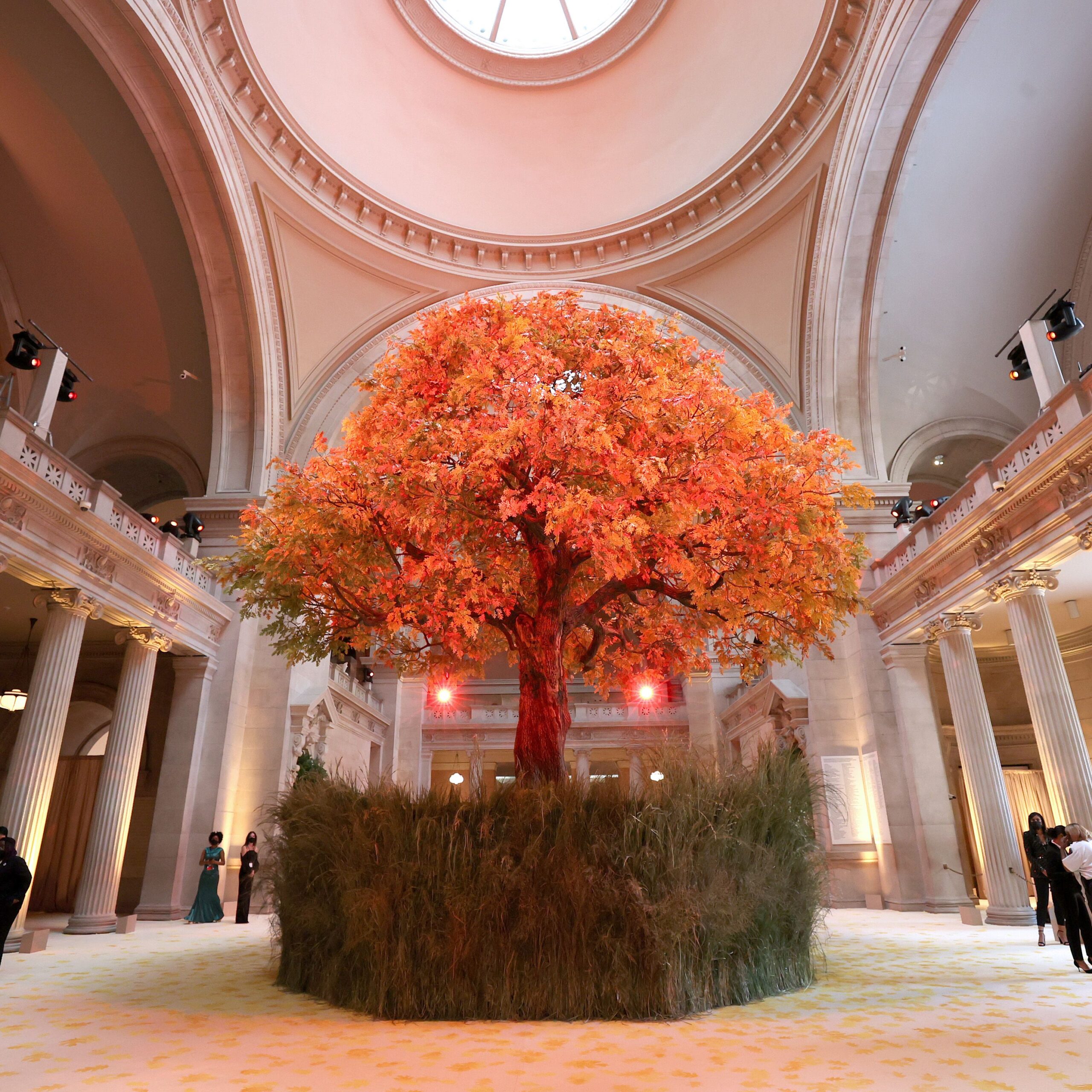The latest and 12th in the series of roof garden installations has just opened at the Metropolitan Museum of Art. Created by Jennie C. Jones, Ensemble includes three very large sculptures whose powder-coated aluminum surfaces, in two shades of red, are paired with concrete meant to look like the travertine used in the museum, one of multiple references to the space beneath. Another is the mechanics of the sculptures, which like giant instruments, and «informed by observations of the stringed instruments in The Met’s Musical Instruments galleries,» reads the release, adding texture to the term site-responsive installation.
Each of the three forms on the roof garden is inspired by a different instrument: the trapezoidal zither, an Aeolian harp, and a one-string, paired with a floor piece meant to act as a conductor. The music they make, however, is up to the elements, visitors, and the city.
«There exists a suspended moment before a string is plucked, when a musician’s finger lies poised above it, ready to act—then a short intake of breath, a gentle tug, and it reverberates,» writes associate curator, Department of Modern and Contemporary Art Lauren Rosati for the piece «The Hum and the Lean,» on the artist’s work and Ensemble.
«This tension between dormancy and activation, anticipation and release, animates Jennie C. Jones’s installation.» Intended to be seen, quietly in place, «it’s also invested with the potential to make sound.»
It’s this engagement with sound that’s central to this multimedia artist’s work, writes Rosati. «Since the early 1990s, she has deployed sound and listening as important conceptual tools, which is to say that her works often suggest the presence of music and its technologies despite an absence of sonic matter.»
Jennie C. Jones, born in Cincinnati in 1968, is also known for work that draws from minimalism, modernism, and the Black avant-garde. In conversation with artist Glenn Ligon, Jones gently sidestepped a categorization of herself as either sound artist or an «artist who works with sound in a conceptual way»:
«I would say that ‘sound art’ leans into nostalgia. It points to a historical moment linked to analog technology and access to it. The inception of sound art also occurred during an era that excluded many people of color and women. For me it’s an aspect of art history that becomes a tool for conceptual thinking—a prompt, a juicy reference point that evolved from listening to what I call the Black sonic practitioners.»
Ensemble will be on view through October and will be the last rooftop commission before the temporary closure of the space for the construction of the Oscar L. Tang and H.M. Agnes Hsu-Tang Wing.




